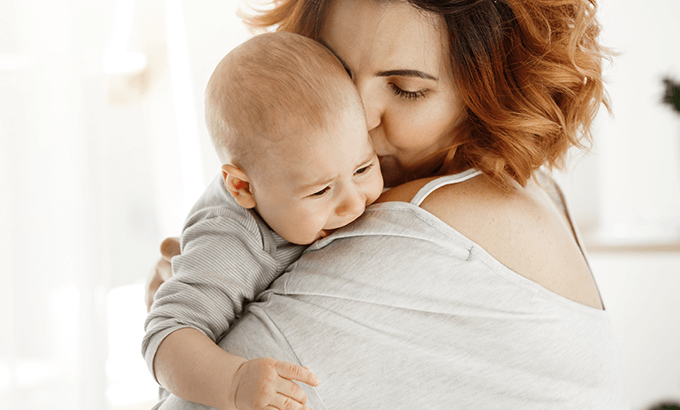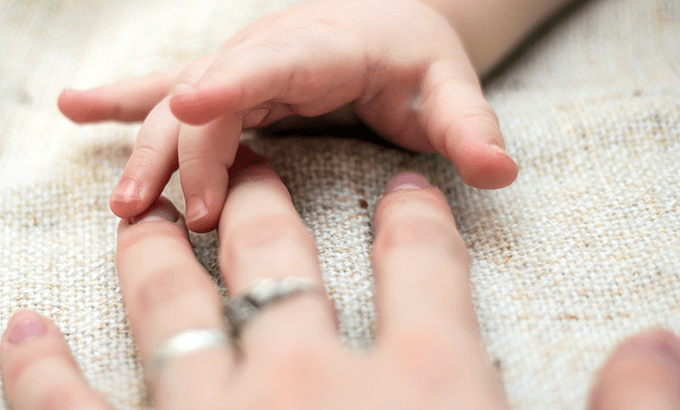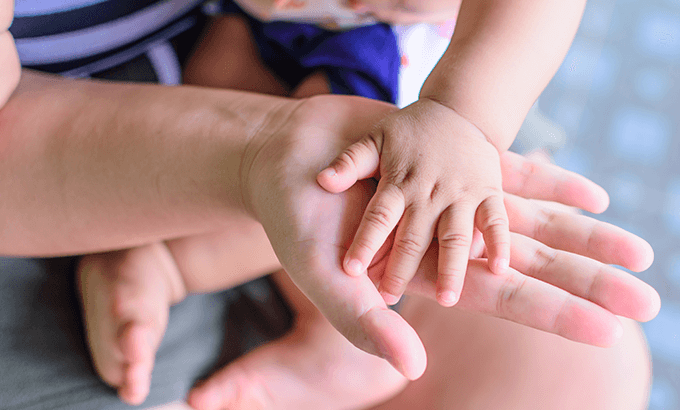Touch is one of your baby’s important senses. Touch plays a vital role in bonding with your baby. It also helps your baby communicate his needs and desires, interact with other people, and explore his environment.
How does my baby’s sense of touch develop?
Your baby’s sense of touch begins to develop in the womb and continues to develop throughout the period following the first year.

Newborn
When your baby is born, his skin is very sensitive. The parts of his body that are sensitive and hypersensitive to touch are his mouth, cheeks, face, hands, abdomen and soles of his feet.
For a newborn, skin-to-skin contact is a vital part of the baby’s bonding and communication with its mother. You can comfort your baby by touching her skin. In addition, your baby may respond to your touching his/her skin with a grip reflex.
Turning your baby’s hand with his palm facing up, he will grab your finger if you stroke his palm. In the same way, if you put an object in the palm of your hand, it will hold that object in the same way. As your baby grows, many of these newborn reflexes will disappear.
Your baby’s mouth is also very sensitive. Your baby will also use his mouth as a different way to learn and explore.
When you lightly touch your baby’s cheek, he will respond to your touch by turning his head and using his mouth to explore your touch.

1 month
In the first month, your baby’s hands will usually be closed and fist-shaped. However, when his hands are open, he will also be happy to feel your finger in his palm and grasp your finger.
2-3 Months
Your baby likes it when you hold her and touch her. He can respond to you by grasping your fingers with friendly touches. Your baby’s tongue, lips, and mouth are soft and tender, and when she tries to chew and bite a soft toy, she tries to use her mouth to feel and explore the texture and surface of the toy.
Your baby cannot grasp objects and take them himself, but he is happy to have different objects given to him. He/she may notice the difference between hard and soft items.
4 Months
As your baby’s muscles grow larger and stronger, they begin to reach out and touch objects (especially the muscles in their arms and hands).
5 Months
Your baby can now lift and move objects by holding them with both hands, but she still uses her mouth to feel their texture and surface.
Your baby will probably be happy with the feeling of being in the water, and likewise, splashing around while bathing will make him/her very happy.
6 Months
Your baby’s sense of touch is developing. He often passes objects from one hand to the other as he learns to reach out and grasp objects with both hands. He likes toys that he touches and interacts with. You can encourage your baby by giving them toys that make noise when touched.

7-8 months
Your baby’s planar awareness is developing. Along with the sense of touch, it can distinguish between flat and three-dimensional objects. Your baby will be happy to touch twisted or warped toys that can be held or have a handle, or to be able to hold toys.
Your baby may have started to crawl. You can give your baby more objects to touch and explore.
9th – 10th month
Your crawling baby is much more mobile than before and begins to realize that there are many more objects to touch around.
11th-12th months
At the age of one, your baby begins to discover and perceive all kinds of textures that are hard, soft, cold, wet, sticky and pointed. He now uses his hands instead of using his mouth to examine and feel objects.
